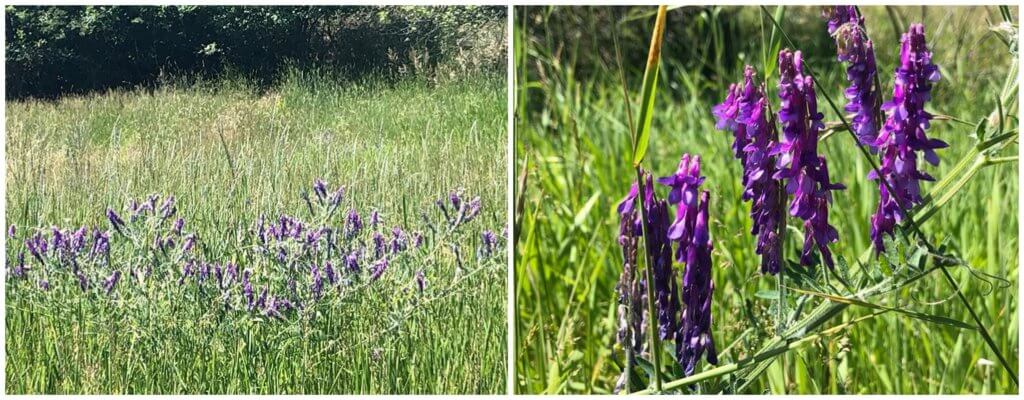You asked: “What is this plant I’ve been seeing all over Mount Sentinel and the south side of Missoula?”

The answer: This is winter vetch (Vicia villosa), also known as hairy vetch. It is non-native, introduced throughout North America from Europe for forage (according to the Manual of Montana Vascular Plants by local plant expert Peter Lesica). It is in the pea family (so it is related to lupines and the peas we eat) and the flowers have the classic pea family shape, bilaterally symmetrical with a banner petal on top, two wings on the sides, and the lower two petals connected along the bottom to form a keel, or canoe-like envelope holding the style and stamens.
There is a native vetch species in the area, American vetch (Vicia americana). The two species can be distinguished by the number of flowers on one stalk (12-70 and close together for winter vetch and 1-8 and further apart for American vetch) and by how hairy the leaves are (with hairy vetch obviously being visibly hairy or covered in hairs and American vetch lacking hairs or only being minimally hairy).
A fun detail about these plants and other vetch species: vetches are one of the two pea family genera found wild in Montana that have tendrils. You can see this is the close-up photo above. The tendrils are actually modified leaflets that the vetch plant uses to wrap around upright structures and “climb” them, extending the height of the plant and its access to sunlight without putting in the energy to develop a strong stalk of its own. Tendrils are a really cool adaptation, especially in how they “know” when to wrap around something. They are touch sensitive, and respond to coming into contact with another object by coiling around that object. (If you’ve seen grape plants or Virginia creeper you may have noticed this coiling tendency!) And some tendrils also use chemical sensitivity to know what to wrap around and what not to. Check out this scientific article about how tendrils use chemical sensitivity to avoid wrapping around leaves or stems stems of plants in their own species. Cool stuff!
Have a natural history question? Send us your #askanaturalist questions on Facebook and Instagram!












